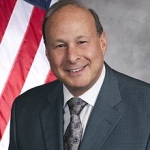Storm the Barricades! But, which ones?
Posted by Jun 23, 2017

Dan Hunter

Stan Rosenberg
Content sponsored by University of Massachusetts Amherst Arts Extension Service.
Does it feel like you are walking in a fog of rage these days?
Events in Washington can leave us consumed in gyrations of outrage. You may want to scream, vent, rant and storm the barricades. But, which barricade should you storm?
Our answer is: any and all of the issues in dispute, such as immigration, poverty, health care, ethics, scandal and the arts.
Yes, we must fight for the arts as well. After 52 years of mostly bipartisan support for the arts, President Trump is the first president ever to call for the elimination of the National Endowment for the Arts, along with the National Endowment for the Humanities and the Corporation for Public Broadcasting.
But, where is the barricade to fight for the arts?
Too frequently, people assume that the most important policy and funding arena is the federal government in Washington DC. That assumption leads advocates to fight for short term gains, when building a network of political support in cities, towns and states will lead to longer term success. Focusing on the intense frustration with the administration’s proposal to cut federal arts funding may be masking a more fundamental issue for the arts. Our battle is at the grassroots to convert favorable opinion for the arts to political support.
We need to carry the fight for the arts to the state capitals and city halls of the nation for three reasons:
1. According to data from National Assembly of State Arts Agencies, local and state governments provide more cultural funding nationwide than the NEA:
- City, town and county governments = $738 million (FY 15)
- State governments = $368 million (FY 17)
- Federal government = $150 million (FY 17)
2. Your individual advocacy has more impact:
- Local and state officials are more accessible to voters than members of Congress. You can develop relationships with elected officials. It’s better to be one voice among thousands, than one voice among millions.
3. Your investment of advocacy time at the local and state level will provide dividends in the years to come:
- Most Senators and Congressmen and women began their political careers as state and local officials. Earning their trust and amity early in their careers means that you have an ally as he or she rises through the political ranks.
Ultimately, we need to win support from voters. Only grassroots advocacy will convert public support—as shown in Americans for the Arts public opinion polls—into electoral and legislative support. Winning that support does not happen overnight.
We need to understand that cultural advocacy is a long-term political movement.
In Massachusetts, the cultural community and arts funders have invested in advocacy through MAASH and now MassCreative, raising state cultural funding from a low of $7.3 million in 2003 to $16.5 million approved by the Senate in May 2017. Our advocacy also succeeded in winning the Cultural Facilities Fund which in ten years has invested $91.9 million in restoration and construction of Massachusetts cultural assets.
While the state invested in cultural facilities in ten years, the cultural community led by the MCC and MassCreative did not stop advocating. We achieved the $92 million mark by consistent, long-term advocacy at the state and local level—not for one or two years, but every year for ten years.
You can learn how to effectively advocate at any level of government in our chapter on advocacy in “Fundamentals of Arts Management,” published by the UMass Amherst Arts Extension Service. In the book, you will learn the ins and outs of arts advocacy from creating strategy, to building alliances, to the details and protocol of conducting a meeting with an elected official.
Advocacy is fundamental to building a vibrant and lasting cultural community. But, most cultural leaders shy away from the political world. Some cultural leaders believe wrongly that their organization’s non-profit status prohibits cultural advocacy. Other leaders may believe that they don’t have the political skills to achieve their goals. In “Fundamentals of Arts Management,” you will shed your shyness and begin building a better future for arts and culture in your community.





